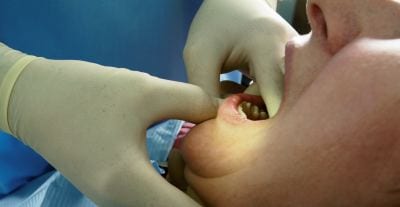On March 31, 2020, the American Academy of Orofacial Pain’s request to recognize orofacial pain as a dental specialty was granted by the National Commission on Recognition of Dental Specialties and Certifying Boards based on compliance with the Requirements for Recognition of Dental Specialties.
The American Academy of Orofacial Pain (AAOP), founded in 1975, is a professional membership organization of dentists and other health professionals that is dedicated to alleviating pain and suffering through the promotion of excellence in education, research, and patient care in the field of orofacial pain and associated disorders.
Orofacial pain (OFP) as the specialty of dentistry that encompasses the diagnosis, management, and treatment of pain disorders of the jaw, mouth, face, and associated regions. The specialty of OFP is dedicated to the evidenced-based understanding of the underlying pathophysiology, etiology, prevention, and treatment of these disorders and improving access to interdisciplinary patient care. According to the AAOP, OFP disorders include but are not limited to temporomandibular muscle and joint (TMJ) disorders, jaw movement disorders, neuropathic and neurovascular pain disorders, headache, and sleep disorders. The American Dental Association (ADA) definition of orofacial pain is currently under review by the National Commission Board of Commissions.
The ADA states that, “Dental specialties are recognized by the National Commission on Recognition of Dental Specialties and Certifying Boards to protect the public, nurture the art and science of dentistry, and improve the quality of care. Specialties are recognized in those areas where advanced knowledge and skills are essential to maintain or restore oral health (Association policies are contained in the ADA Principles of Ethics and Code of Professional Conduct).”
AAOP president Jay Mackman, DDS, says in a release, “The most important outcome of this decision is the relevance and impact it will have on improving care for patients with orofacial pain disorders. This has been the main driver behind AAOP pursuing orofacial pain as an recognized specialty. There are millions of patients with orofacial pain conditions that currently have poor access to care due to the limited number of dentists who focus their practices in this field. It is hoped that with the recognition of the specialty in orofacial pain will bring expanded training and research opportunities leading to improvements in quality and access to care for these patients.”
AAOP executive director, Kenneth Cleveland, says in a release, “This recognition is the culmination of many years of dedicated work by the members of AAOP. I would also recommend the recent Report of the National Academies of Science, Engineering and Medicine on Temporomandibular Disorders: Priorities for Research and Care as a source for more information on the need for additional trained professionals to treat TMD and orofacial pain.”
Photo 157577712 © Gligatron – Dreamstime.com





